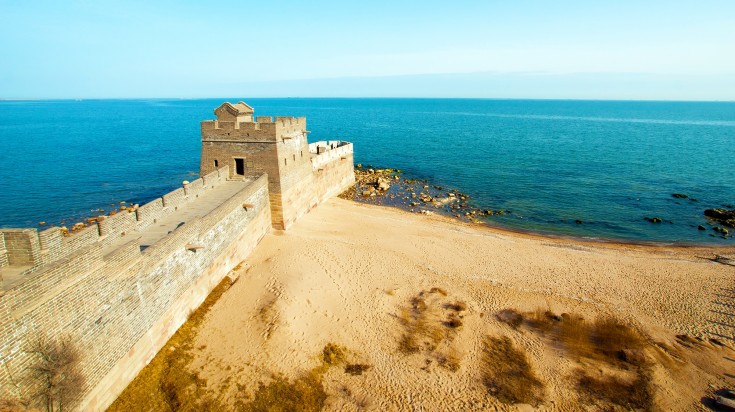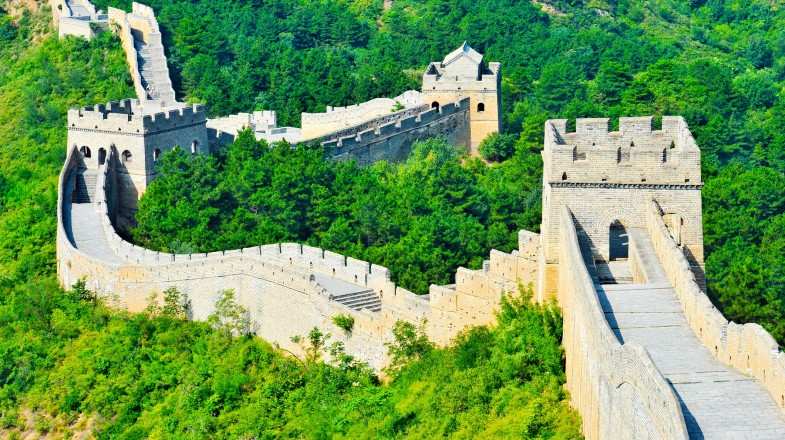Visiting the Great Wall of China: All You Need to Know
One of the most popular attractions in the country, this series of defense fortifications known as the Great Wall of China is an iconic landmark that snakes its way along the northern borders of China. At more than 1,500-years-old and 21,196-kilometers-long, it is not just listed as a UNESCO Heritage site but also renowned as one of the seven wonders of the modern world! If you want to make the most of your visit during your trip to China, here’s a quick and handy guide every traveler should read before visiting the Great Wall of China.
- Marcal
Brief History: When and why was it built?
Construction of the Great Wall began with several smaller, unconnected walls during the 4th century and continued until the 17th century when the walls were unified by Ming emperors. Its main purpose was to protect the ancient Chinese empires from foreign invasions. At the time, and for centuries after, it was the largest military establishment on the planet.
Now, this formidable wall provides a northern border to Beijing and spans across several cities and provinces from Jiayugua in the north-east to Shanhaiguan on the east coast.
Which Section to Visit?
Just like a gigantic dragon, the great wall meanders up and down across mountains, deserts, and grasslands as it paves its way to the outskirts of Beijing. Contrary to popular belief, it is not one long continuous wall but actually split into different sections (interspersed with mountains) that were built to provide an impenetrable defense against enemy tribes.
These sections include the well-restored Mutianyu, the picture-perfect Jinshanling and by far the most visited and popular section, Badaling. Other sections of interest are Jiankou, Simatai, Huanghuacheng, Juyongguan, Gubeikou, Shanhai Pass and Huangyaguan. All sections are unique and have an incredible diversity of beautiful scenery. To help you decide which area to visit, here is a snapshot of the four most famous sections that promise memories for a lifetime.
1. Mutianyu
- Opening/closing times: 8am-5pm in summer; 8:30am – 4:30pm in winter
A favorite among locals and tourists alike, the two-kilometer-long Mutianyu section is a masterpiece of restoration. It is home to 23 extraordinary watchtowers that are seldom seen along other sections and very rare in the architectural history of the Great Wall. This section offers breathtaking scenery with green pines covering ninety percent of the surrounding area! What’s more, Mutianyu packs a plethora of fun, from adventurous wall hikes to amazing photo ops with the Chinese flag waving on a high-rise tower in the background.
- Location: Huairou District, 70 km northeast of Beijing
- Pro tip: With a cable car and chairlift facility available, you can reach the top of the wall in a flash.
2. Badaling
- Opening/closing times: April – October: 6:30 am to 7:00 pm; November – March: 7:30 am to 6:00 pm.
Enjoy the thrill of walking through the most popular and heavily visited section of the Great Wall, which is only 1.5-hour drive away from Beijing. As the first section of the Wall to be fully reconstructed, Badaling boasts 16 well-restored watchtowers set in a backdrop of undulating mountains, providing visitors with a classic view of the Great Wall. Moreover, the 3.74-kilometer-long section also offers pulley and cable car facilities to save you energy and make it easier to reach atop.
- Location: Yanqing district, 70 km northwest of Beijing
- Pro tip: Check out the Great Wall Museum, which provides an all-inclusive history of the Wall.
3. Simatai
- Opening/closing times: April – October: 8:00 am to 6:00 pm; November – March: 8:00 am to 5:30 pm.
Experience genuine historic charm at this peaceful, semi-ruined section of the Great Wall that retains its historic appearance, even at night. This section and architectural marvel takes two hours to reach from the capital city. Visitors can relish a memorable hiking experience by climbing up Simatai from the Gubei Water Town, a lovely restoration of an ancient Chinese town that sits at the footsteps of this section of the wall. For those who prefer convenience, there is the availability of cable cars and battery carts too.
- Location: north of Miyun County, 120 km northeast of Beijing
4. Jinshanling
- Opening/ Closing Times: April – October 6:00 am to 6:00 pm; November – March: 7:00 am to 5:00 pm
If you're looking to behold the picturesque Great Wall in its rugged, natural state, Jinshanling is undoubtedly the best option. Only two hours' drive from Beijing, this 10-kilometer-long section features brilliant vistas of the battlement walls, gun emplacements, and watchtowers. Due to the uneven, mountainous terrain of the region, the watchtowers were built in a variety of shapes and sizes including square, oval, and rectangular towers.
- Location: Hebei Province, 125 km northeast of Beijing
The Wall in all seasons: When is the best time to visit?
- Spring (March – May): Enjoy a pleasant tour of the Great wall in spring when the landscape is refreshed and teeming lush green vegetation or even colorful blossoms. Spring temperatures are also mild, usually ranging from 11 – 24°C.
- Summer (May – September): Although it can be hot and crowded, summer is the best time to see flourishing flowers and green trees while walking on the Great Wall. Temperatures usually hit above 25°C.
- Autumn (September – November): Unarguably the best time to visit the Great Wall, autumn offers somewhat cooler and drier weather conditions for hiking. It is also the perfect time to enjoy the clear, stunning views of the rolling hills and the leaves changing colors. Temperatures often range between 10 – 25°C.
- Winter (December – February): Despite the chilly temperatures, visiting the Great Wall in winter means virtually no crowds (even at Badaling!) and stunning, snow-blanketed scenery. You won’t be able to resist snapping photos of the mountains. Just make sure you dress appropriately.
What to do at The Great Wall
1. Hike or walk

Enjoy a truly rewarding hike along the Great Wall using not only restored trails but also ones that are ruined or forested with spectacular wildflowers. From a casual stroll at Mutianyu to stupefying hikes along Jiànkòu, each section of the Great Wall offers a wealth of variety and allows you to cover miles of stunning terrain and discover breathtaking scenery.
- Good to know: You can hike between the 5th and 6th watchtowers of Simatai at night; it is the only section that is brightly lit up.
2. Paraglide
Experience an unparalleled feeling of freedom as you marvel at the Great Wall from 305-feet-above the ground! While it is possible to sail over this magnificent wonder from all the sections that are open to the public, it is the 45° slope at Simatai that makes the most adventurous location for paragliding.
- Good to know: The height from the take-off point at Simatai Great Wall to the landing point is 300 meters facing south, which makes it even more challenging and sought after among adrenaline junkies.
3. Picnic
Hike the ancient Jiankou section of the Great Wall and soak in authentic views of unrestored towers with a packed lunch or cheese and wine picnic with your friends or family. Offering a once-in-a-lifetime experience to marvel at the rugged, unscathed grandeur of the Wall away from the crowds, the Jiankou section is a perfect spot to enjoy a picnic.
- Good to know: There are very few options for restaurants when visiting the Great Wall. We recommend preparing snacks beforehand to make your picnic less hassle and more fun.
4. Camp

If you’re a real adventurer, try wild camping on the Great Wall. Experience the stillness at night as you stargaze after hiking along Jiankou, the most adventurous section. The best time for wild camping at the Great Wall is early autumn before it gets too cold at night.
- Good to know: While it is likely fine to camp anywhere on the unrestored Jiankou, it is highly recommended that you place your tent away from the Zhengbeilou Tower so the locals don’t bother you.
5. Go for a ride at Mutianyu

If you want to save your energy or experience the Great Wall without all the hiking involved, Mutianyu has three options for unique, less active activities at the Great Wall. The first is a cable car, which you can ride up or down. Or, if you prefer, try the less-fancy slide rail, which won’t take you as far as the cable car but is fun nonetheless. Then, as decent alternatives, you can choose to ride either a toboggan or the slide rail. Roll down the valley in just a few minutes, and experience the great views while you’re at it!
- Good to know: For adults, the slide rail and cable car both cost about USD 18 per person for both ways, and the toboggan is about USD 9* per adult for one way.
6. Leave your name on the Great Wall
Scribble your name on the special graffiti section of this massive monument and mark your presence — something that’s likely to last for a lifetime.
- Good to know: There’s a dedicated graffiti section marked by the number 14 fighting tower in Mutianyu, where artists can help you leave your signature.
7. Hit the beach

Did you know that the Great Wall doesn’t just tear through the mountains but also extends into the Bohai Sea? Commonly known as the ‘Old Dragon Head’ or Laolongtou, this part of the Shanhai Pass was once in ruins, but has now been restored for visitors to enjoy a walk along the shores.
- Good to know: While this spot is relatively distant from Beijing (about 300 kilometers), it does tend to get crowded early.
Tips before you visit the Wall
- Wear comfortable hiking/ walking shoes and be prepared for stairs and steep terrain.
- Start as early as you can to avoid the crowds and enjoy the serenity of the Wall.
- Food stalls and restaurants are not always available. Bring snacks to munch on.
- Check the frequency of public transportation (buses and trains) in advance, or pre-book a cab.
- Limit your water intake as there is no washroom beyond the main entrance.
Visiting the Great Wall of China is a once in a lifetime experience and a must-do for most world travellers. Walking the various sections of the wall will transport you back to ancient China while also revealing its unique side. In our opinion, this architectural wonder rightfully deserves its distinguished stature as one of the Seven Wonders of the Modern World!











